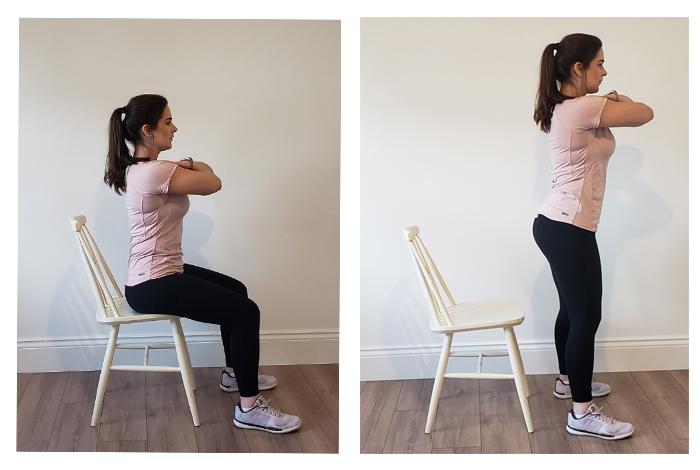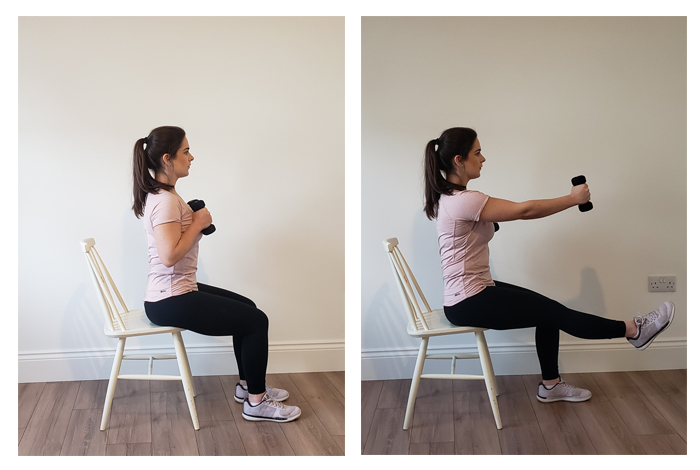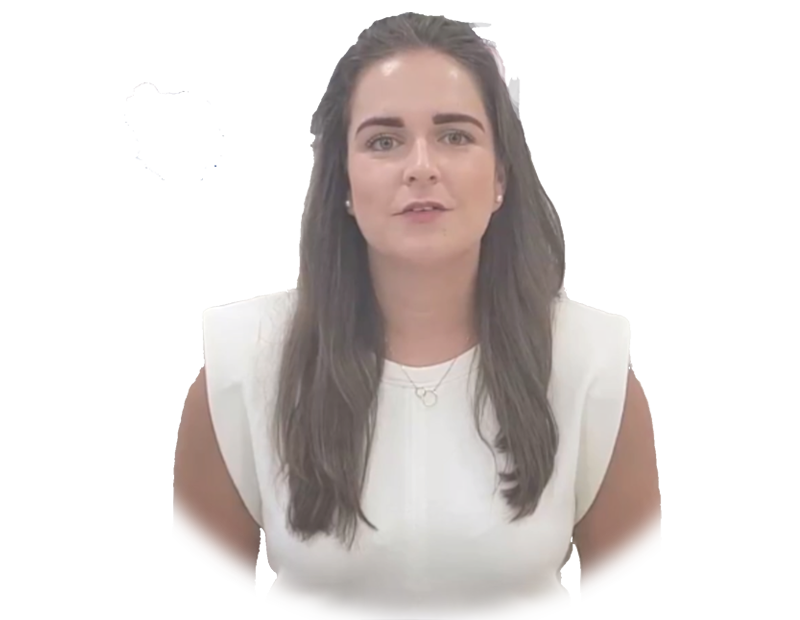Pulmonary Hypertension Unit
Physical activity & exercise
Preface: Dr. Ciara McCormack, Clinical Exercise Physiologist has created a video demonstrating a bespoke Pulmonary Hypertension (exercise) rehabilitation programme that PH patients can complete in the comfort of their own homes. Please read the content below and then you can find the video by clicking / tapping the button below:
Practical tips and suggestions
Why
There are numerous positive effects of physical activity and exercise on health, including improved muscle strength, bone denisty and walking distance. Furthermore physical activity can contribute to overall wellbeing and improve sleep, reduce fatigue and assist with weight management, translating to a better quality of life.
So there are a lot of reasons to staying active!
How
It can be difficult to become more active, especially if you are just beginning. It is important not to put too much pressure on yourself. The priority is to focus on taking small steps towards becoming more active and creating positive habits. Here are some tips on how to do so:
Motivation
- Set realistic goals at the start of each week and find ways to track your progress e.g I will do 10 minutes of exercise on 3 days this week and I will mark it off on my calender each time I do it.
- Also set long term goals e.g. what do you want to achieve in 12 weeks times? E.g In 12 week’s time I want I aim to be able to achieve 15 minutes of exercise 4 days a week
- It’s a good idea if you have someone at home to help encourage you or to be active with you, so share your goals with your family and friends so that they can support you.
Keep track
- Track your steps and weekly activity e.g. using a Fitbit watch or a step counter on your phone
- Consider keeping a physical activity diary to track your progress over time
Do something you enjoy
- Try to find an activity that brings you joy and doesn’t feel like work; this way you will be much more likey to engage in the activity on an ongoing basis e.g walking outdoors, cycling on a stationary bike, pilates, yoga, swimming, dancing
What
Pulmonary hypertension effects everyone differently and therefore everyone has different limits when it comes to exercise and physical activity. While it is important to challenge yourself, we never want you to push yourself too hard so that you feel unwell. If you have any doubt about what’s right for you, always ask us in clinic and we can provide individualised advice or an ‘exercise prescription’. It is important to try and find simple ways to stay on your feet a little more on the days that you are well, and below are some practical examples of gentle ways to start increasing your daily activity.
Indoor exercise:
- Walk around the kitchen table while waiting for the kettle to boil instead of sitting down.
- March on the spot: Lifting your legs high and swinging your arms.
- Do arm circles: Straighten your arms out to shoulder height and do small circles, in both directions, you could do this sitting or standing.
- Do a few sit to stands (image 1 below) and seated leg raises and arm punches (image 2 below) at few times a day.
- Consider investing in an exercise bike or treadmill, and gradually increase your activity each day.
- Put on some music you like and dance around the kitchen (Dancing is a great way to keep active in a fun way).
Outdoor exercise:
- This can be tough in the winter months- try and find a safe area to walk outside most days: fresh air and sunlight also have innumerable benefits. Even walking around your garden or house is beneficial.

Sit to Stand (image 1)
- Starting Position: Sit tall in the chair, your feet shoulder width apart, eyes looking forward.
- Push through your feet and stand upright looking up and forward at all time.
- Slowly lower yourself down, touch bum off chair and stand tall again.

Seated leg raise with arm punch (image 2)
- Starting position: Sitting upright on chair, with back away from back of chair, two feet on floor, knees at 90 degrees.
- Slowly extend right knee until it is straight and at the same time extend the arm of the same side out straight at shoulder height.
- Slowly return to starting position
- Repeat on left hand side.
Managing Breathlessness during Physical Activity
Breathlessness is a significant problem for many people with Pulmonary Hypertension and may limit your physical activity and exercise tolerance. This section outlines some simple and effective breathing techniques that can help you master your breathlessness.
What do I do if I get Breathless?
Getting breathless when exercising can make you feel a little anxious. If you panic, it can make you feel even more breathless and it can be difficult to interpret whether your symptoms are related to pulmonary hypertension or anxiety. The key is to stay calm and learn ways to manage your breathlessness. There are several breathing techniques that you can use when you exercise to help you control your breathing. Here are some examples:
Blow-as-you-go
Blow-as-you-go helps make tasks and activities easier. Use it while you’re doing something that makes you breathless. You can use it with pursed lips breathing.
How do I do it? Breathe in before you make the effort. Then breathe out while you’re making the effort. For example, when standing up, breathe in before you step or stand up, and then blow out as you stand up. Try pursing your lips as you blow out.
Paced breathing
Paced breathing is useful when you are active, e.g walking or climbing stairs. You pace your steps to your breathing. You can use it at the same time as pursed-lips breathing and blow-as you-go.
How do I do it? Count to yourself as you walk or move. For example, breathe in for one step and then take either one or two steps as you breathe out. Take more steps as you breathe in or as you breathe out, if that feels better for you. Try different combinations to find what works best for you – for example, one step in, two steps out.
Pursed-lips breathing
Pursed-lips breathing can be used at any time to help you control your breathing. This helps to empty all the air out of your lungs
How do I do it?

- Inhale slowly through your nose (left image)
- Exhale slowly with lips pursed (as you would to blow out a candle – right image)
Practice these techniques at home first and then start using them during physical activity or while carrying out activities of daily living, it may feel a little strange at first but once you practice for some time you will get the hang of it.
Safety and medical considerations
Safety is key. Always pace yourself and try not to do too much in any single day. If you get chest pain, dizziness or severe breathlessness when you are exercising, then you are doing too much and need to stop and rest. It is important to listen to your body and find a balance between rest and activity. Always, if you are unsure if an activity is safe for you and want to do more- please ask us!



